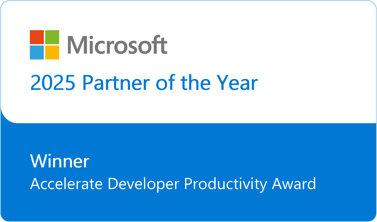Seizing the Moment for Enterprise Transformation
Generative AI (GenAI) is no longer a futuristic concept—it’s a present-day catalyst for transformation. From automating routine tasks to redefining entire business models, GenAI is poised to reshape how organizations operate, innovate, and compete. But while the buzz is loud, the opportunity is even louder.
A New Era of Productivity and Innovation
According to McKinsey, GenAI could automate up to 70% of business activities across nearly all occupations by 2030. That’s not just a productivity boost—it’s a seismic shift in how work gets done. Whether it’s generating marketing content, summarizing legal documents, or enhancing customer service, GenAI is enabling organizations to do more with less—and do it faster.
Gartner predicts that by 2026, over 80% of enterprises will have used GenAI APIs or deployed GenAI-enabled applications in production, up from just 3% in 2023. The message is clear: the GenAI wave is coming, and those who ride it early will lead the next generation of digital transformation.
Why GenAI Is Different
Unlike traditional AI, GenAI is general-purpose. It can generate text, images, audio, and even code. It can reason, summarize, and personalize. It thrives on unstructured data—something most enterprises have in abundance but struggle to leverage. In fact, organizations typically have 3–4 times more unstructured data than structured data. GenAI unlocks this hidden value.
Its versatility means it can be applied across departments—from HR and finance to R&D and customer support. It’s not just about efficiency; it’s about enabling new possibilities.
The Business Case Is Compelling
- 44% of working hours across 19 industries could be influenced by GenAI.
- 65% of U.S. executives believe GenAI will have a high or extremely high impact on their organization within 3–5 years.
- 77% think it will have a bigger impact on society than any other emerging technology.
These aren’t just numbers—they’re signals. GenAI is not a trend. It’s a turning point.
The Inflection Point Is Now
We’re at a critical juncture. The organizations that act now—those that invest in the right strategy, infrastructure, and enablement—will be the ones that lead. But moving from experimentation to enterprise-scale adoption isn’t easy. It requires more than just enthusiasm. It requires a plan.
That’s where InCycle’s GenAI Accelerators come in. They’re designed to help organizations go beyond proof-of-concept and into production—quickly, securely, and at scale.
Next Up: In the second post, we’ll explore the biggest challenges organizations face when trying to scale GenAI—and how to overcome them.
GenAI Series Part 2: From PoC to Production – Overcoming GenAI Adoption Challenges









